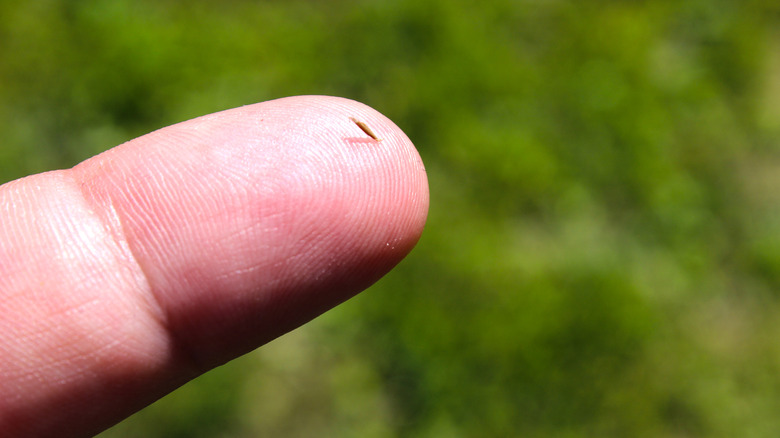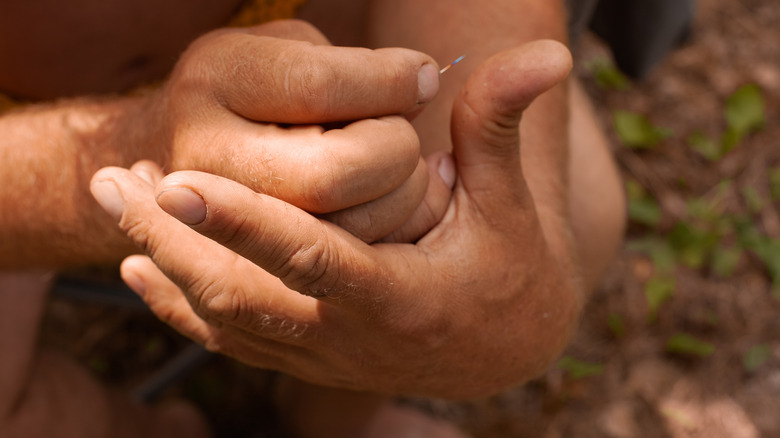What Happens To Your Body When You Get A Splinter
Splinters are small fragments of foreign objects that puncture and become embedded in the skin. Although splinters can occur anywhere on the body, they are usually found on the hands and feet (via eMedicineHealth). Most splinters are tiny fragments of wood, but they can come from a variety of materials, including glass, plastic, and metal, and can occur from any activity that causes pieces of a foreign object to dislodge and puncture the skin. Some of these activities include woodworking, gardening, and metalworking.
You can also get a splinter if your feet come in contact with a broken wood surface or if you accidentally step on shards of glass. While splinters are fairly common, they can be quite painful depending on what they're made of or how deeply they penetrate the skin. That's why the best course of action is to remove them as soon as possible.
How to remove a splinter
Most splinters can be easily removed at home with a few household items. Before you do anything, however, you need to wash your hands and disinfect the area around the splinter (via Cleveland Clinic). This can help prevent any germs and bacteria from entering your skin and potentially causing an infection. It's also a good idea to sterilize whatever tool you use to extract the splinter from your skin. Depending on the position of the splinter, you can use one of two household tools: a needle or a pair of tweezers.
If part of the splinter is still sticking out of your skin, you can grab it and remove it with a pair of tweezers. If it is fully embedded in your skin, however, you're probably better off using a needle. "I tell people to visualize the splinter and use the needle to feather open the top layer of skin to expose the material you are trying to remove," pediatrician Dr. Kyle Mudd told the Cleveland Clinic. "Once the splinter is exposed, you may attempt to grab it using tweezers and pull it out along the same route that it entered the skin."


